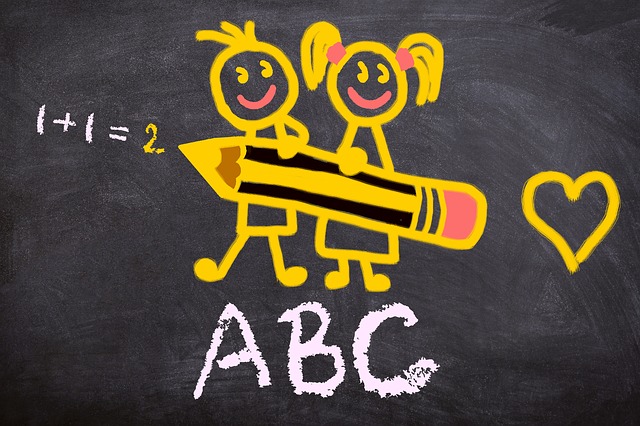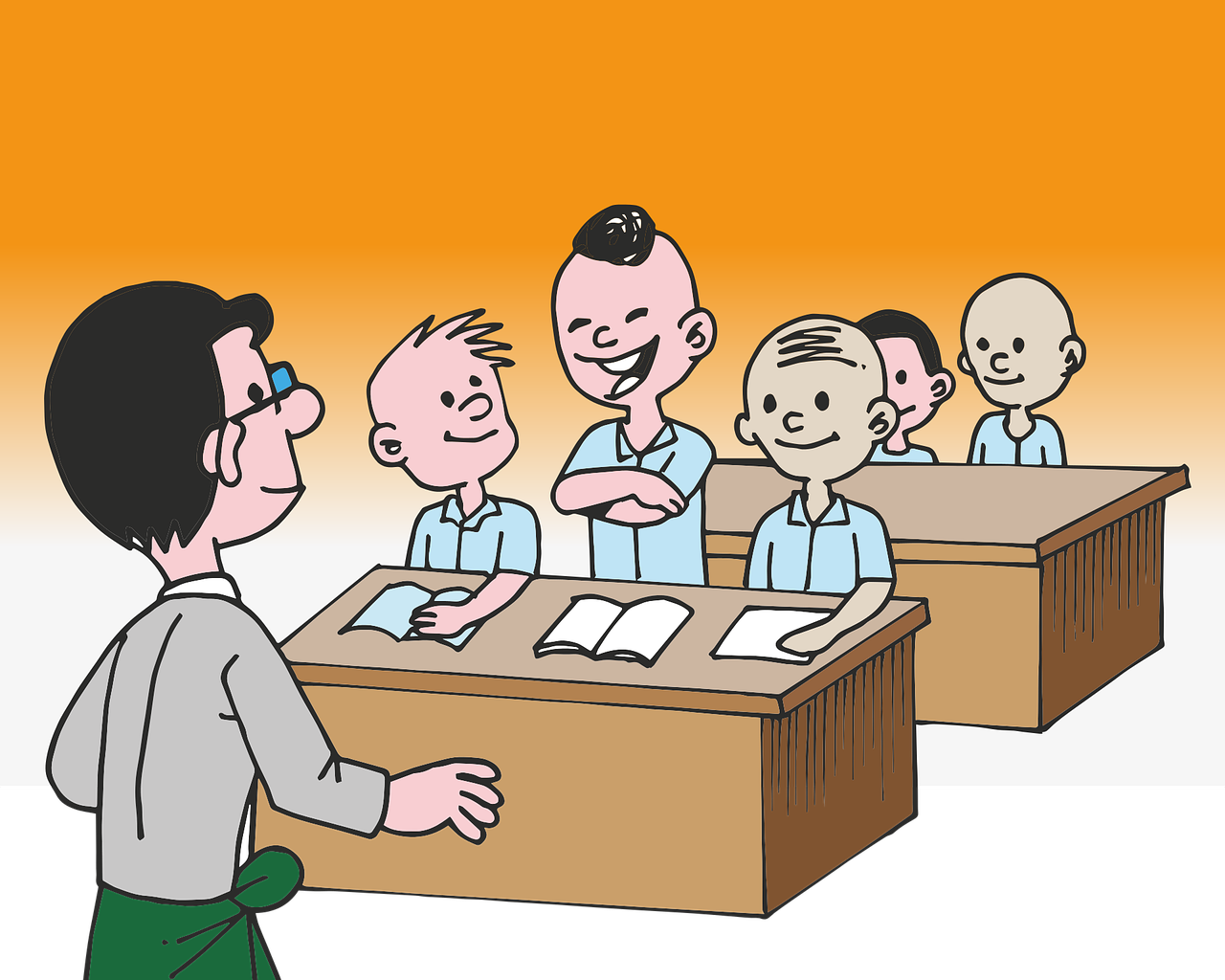In this world of open education and the availability of online educational resources, kids don’t necessarily need to go to schools to get a quality education. Traditional schooling is poisoned with flaws that might impose a negative impact on your child. Rather than going into the typical path, you could always go for homeschooling for the betterment of your kids.
Homeschooling which is also known as home education is a popular form of education nowadays. North Americans call it ‘Homeschool’ where Europeans call it ‘Home Education’.
Rather going to a formal school, homeschooled students are taught at home in a less formal way. Mostly, their parents, house tutor or online teachers play the role of teachers in this case.
Now, more than ever, parents are choosing homeschool and teaching them at home instead of sending their children to a formal public or private schools.
Table of Contents
Why Should You Prefer Homeschooling?
The United States National Center for Education Statistics shows that about three percent of all the students in the US were homeschooled in 2011-2012.
There is no clear evidence of exactly how many students are being homeschooled nowadays. But as of 2016 record, there are almost 2.3 million students who were homeschooled in the United States.
This clearly illustrates that homeschooling is getting more and more popular and now parents are interested in teaching their children at home.
The motivation behind choosing homeschool varies from parents to parents. But there are mainly two reasons –
First, many parents are not satisfied with the way traditional schools teach. Second, parents want to be more involved in their children learning process and they want to spend more time with their children.
That was also the case for Helen Clark, a mother from Iowa who homeschools her only elementary-aged son. Homeschooling allowed her son to learn things at the natural pace which is pacier than traditional schools.
She likes the flexibility of homeschooling and the extra time she can spend with her child. It allows her to take decisions on the direction of education.
She tells that, she is not the best teacher her child may have, but homeschooling allows her to spend more time with her son and she actually knows what her son is learning.

A World full of Possibilities
There are some legal requirements for homeschooling and they vary from place to place. But some universal rules are practiced.
Parents certainly need some preparation to homeschool their children. They have to maintain a schedule so that they get the best result out of it.
The beauty of homeschooling is its flexibility. There is no hard and fast schedule for homeschool. Parents can customize the homeschooling schedule with their preferable time.
There are also many methods to homeschool children. It depends on parents which method to follow.
Parents will find many resources nowadays to homeschool their children. They will find these resources online.
However, homeschooling has many criticisms as well. Many commoners think that homeschooled students are not socialized enough.
But there are many success stories at the same time.
The school shooting has created huge tension in the US. Many students are bullied in the schools as well. Many of them feel inferior.
These are the reason homeschooling is becoming popular in the US and around the world.
Homeschooling is getting popular day by day. That doesn’t necessarily mean it will work for you as well.
Would it work for you and your children? Well, you’re the one to decide that.
How Homeschooling Came into Being?
Teaching children at home is probably the most common thing in all different cultures for most of history. It was a common practice before formal education was started.
Professional tutors were expensive and commoners had no access to it. This option was only available to rich people.
Eventually, the system declined with the activation of compulsory attendance law in the 19th and 20th century. Though many isolated communities kept practicing this form of education.
Homeschooling became resurrection in the 1960s and 1970s as many educational reformists were dissatisfied with the traditional schooling system. And from then on, it’s getting more and more popular.
A New Trend in the Town!
The first public schools were established in 1524 and 1527 in Gotha and Thuringia, two German states. The literacy rate increased from the 1500s to the 1800s.
Although, the public school increased the literacy rate, the development in literacy rate started before implementing the compulsory attendance or universal education.
In fact, home education or homeschooling was the main form of education until the 1830s. Many people in Europe did not have access to informal education in the 18th century.
However, formal schooling became popular and the most common means of education system across the developed countries since the early 19th century.
Back in 1647, compulsory elementary education was provided in New England. Although, the educational situation was different between New England and New York.
There were regional differences in colonial America as well. Education was more compact in the north than that of the south.
Native Americans used to pass their knowledge to their children through home education. They resisted compulsory education in the United States for a long time.
The Advocates Who Gave Life to It
Rousas John Rushdoony started advocating homeschooling in the 1960s. He wanted to combat the secular public schools in the United States.
During this time, a research came out that showed how harmful formal school can be for a child before 8-12 years of age.
With this research result, the Moores started publishing their view against public schools. They presented evidence on how formal schooling was damaging children mentally, academically and socially.
They claimed that the bonds and emotional attachment between children and parents evolve during these years. But enrollment in schools cut short this development.
They stated that children are better suited at home. They will get exact treatment at home rather than in schools.
A book named ‘Better Late Than Early’ was published in 1975 that paved the way for homeschooling. The Moores embraced homeschooling and started advocating for it.
With the publication of other books like ‘Home Grown Kids’ and ‘Homeschool Burnout’ many authors published books questioning the necessity of compulsory schools.
With the publishing of many more books advocating for homeschooling, people in the United States and around the world became interested in homeschooling again.
And now, parents are more concerned about their children’s mental health and academic performance. And that is why hundreds of parents are homeschooling their children.
This is how an age-old system of learning became not only a popular form of education but also an alternative to formal education in the 21st century.
How Can Homeschooling Benefit Your Child?
Homeschooling is a popular movement around the world. More parents are choosing to homeschool nowadays for a variety of reasons.
This includes dissatisfaction with the quality of education in schools, religious beliefs, etc. Many parents think that traditional schools are not progressive enough for children.
The movement for homeschooling started growing in the 1970s when some authors and researchers started writing for reform in education by raising questions against traditional schools.
They started advocating for homeschooling because they believed that homeschooling does not affect the physical and emotional development of a child.
Parents are very concerned about their children nowadays. They want to know everything that is happening around their child.
They choose to homeschool because of many reasons. Homeschooling isn’t what many commoners think it is.
Homeschooled kids have the same access to learning, socialization and extracurricular activities.
This creates a debate on homeschooling vs public schooling.
Let’s see some of the reasons why homeschooling is better than traditional schools, shall we?
Customized Learning
In traditional schools, kids may not be able to cope up with the pace or the pace is simply not enough for all the students.
The main idea of homeschooling is that the kids need to learn at a pace that is perfect for them. Every individual kid has a different ability.
Traditional schools do not have the luxury to take care of every individual student separately. They use a common system for all the students.
Here, homeschooling makes the difference. It customizes everything with the need of the students.
This approach is called ‘personalized learning’ in academia and it is very popular among parents and students. This guide should help you to get started with Personalized Learning.
Personalized learning uses technology to make lesson plans for students. And probably that is the reason why people like Bill Gates and Mark Zuckerberg are big fans of this approach.
Homeschooling parents are the only people on earth who know what their kids need. And that is why they can bring the best result out of this method.
The Freedom to Learn What You Love
Informal school, the school authority or some third party decides the curriculum of the students. They create this curriculum for every student.
As a result, many students are deprived of what they really need. Not all the students have the same pace or ability.
Also, not all students are interested in the same topic. Each student may have his or her own preference.
Homeschoolers get the chance to tailor their curriculum and focus on what they really want to learn. They can learn about their favorite topic more intensely.
Not only can they explore many more topics that are usually not offered in traditional schools, but also they can learn those that are not usually offered before college or university.
For example, they can learn Anthropology in fifth grade and Finance in eighth grade. This allows them an intensive learning opportunity.
Many parents are well equipped to teach their children, many rely on the resources and platforms that are available to them.
Again, many parents take their child to formal schools or colleges after a certain period of time.
But no homeschooling parents limit the subjects only to Math, Science, English or history. They try to make sure that their children are learning a variety of topics.

Make Friends in a Better Way
The biggest misconception about homeschooled kids is that they lack social skills. Sometimes misleading that the kid has lower emotional intelligence than average. They become introvert and do not interact with people.
Well, this stereotypical conception probably had some truth before the internet thing happen. There was not much opportunity for kids to interact with a lot of other kids.
But now, homeschooling kids have the same opportunity to interact with other kids and actually make friends like those in traditional schools.
And with the help of the internet, they do it without zero distraction.
Apps like Snapchat, Instagram or Facebook may become an addiction for homeschoolers, nonetheless, they get to meet other homeschooling kids or even kids of their own age from traditional schools. The more we move towards technological advancement, the more we would witness the presence of technologies even in the traditional schooling system. So, they are actually ahead of their time.
Homeschooling kids spend most of their times with their parents. This allows them to learn the values of different relationships.
They value their friendship. They do well, if not better in their own life and their social life.
So, the stereotype misconception that homeschooled kids are not social enough or they cannot interact with people, is no longer a truth.
Rather, homeschooling kids are now making friends, hanging out with them and doing all the things like normal traditional school going kids.
Free from Bullying
Homeschooling kids do not have to face the toxic environment like other school going kids. They do not have to face all those bullying that frequently happens at schools.
Though many argue that these downsides are good for students as they make them tough but kids who are frequently bullied may face depression and anxiety.
Eventually, they lose their confidence, their academic performance gets lower in the class and they attend school less frequently.
But homeschooling kids get better opportunities. They are already familiar with the environment and that is why they are always confident.
As a result, they are able to learn their lessons in a more harmonic environment.
Connected to the Real World
Though homeschooling is called homeschooling but students spend a great deal of time at community colleges, libraries, and museums.
They gather knowledge and experiences from these places. The knowledge and experiences they cultivate from these places actually makes them open-minded.
And as homeschooled kids spend most of their times around adults, they are always in the ‘real world’ mode.
A Better Result in the Long Run
There is a high chance that homeschooled kids will do better in their life. The entire system makes sense if we see it from an achievement point of view.
Many researchers suggest that homeschooled kids do better in given tasks. They have more patience and they do very well in colleges once they are enrolled.
A record shows that 67% of all the enrolled homeschoolers graduated from college in 2009 where only 59% traditional school going students graduated from college in the same year.
A Community Only for Homeschoolers
Hundreds of thousands of parents made homeschooling work properly. And other parents are now inspired by them.
And that is why it has become extremely popular nowadays. More and more parents are choosing to homeschool their child in recent time.
They are choosing to homeschool because of the success stories of the homeschooled kids. After all, homeschooled kids have achieved much success in the last few years.
They have won the spelling bee, published books at an early age, got into Harvard and what not!
Now you can take part in online Spelling Bee too! Check out the SBO section on Spellquiz today which is great for 6th grade spelling words or 7th grade spelling words.
Because of these outstanding achievements, they have been featured in newspaper and national magazines several times in the last few years.
Now parents homeschool their children more than ever. The simple reason behind this is homeschooling is now easier than once it used to be.
The main factor of the boom is the availability of the resources. The internet is helping homeschooling parents incredibly.
You are Not Alone Anymore!
Parents felt very alone who homeschooled their kids in the beginning years. But now there is a strong and huge community for homeschoolers.
They can post about any problem at any time in their community platform using the internet. And there is always somebody to help out.
In the local homeschooling community, parents often share the teaching of certain subjects like math or science or history with each other. So, everybody does not have to be a master in all the necessary subjects.
Homeschooling parents also conduct physical-education classes and field trips to museums or historical sites.
Full of Resources
There are tons of academic learning materials available for homeschoolers. These resources are available in the form of books or online.
Many communities offer internet classes for homeschooled kids. Many have opened a resource center to help them out.
Communities are strong now. There is a platform where parents, as well as kids, discuss the betterment of the learning mechanism in the community.
Check out this ultimate list of homeschooling resources.
Some Success Stories that will Motivate You
How do you measure the success of homeschooled kids?
Well, there is some evidence that shows that homeschooling kids are doing tremendously well everywhere nowadays.
They typically score 70 to 80 percent marks on all the national standardized tests. That makes them well ahead of their counterparts from traditional public or private schools.
A Maryland University professor conducted a study that shows that on average, a homeschooled kid in the primary grade is actually one grade level ahead of the kids from traditional schools.
By the time they are in the eighth grade, they are fourth grade-level beyond their friends from public or private schools.
They are Well-Accepted!
The most amazing thing about homeschooled kids is that hundreds of universities and colleges are enrolling them.
For example, in their last enrollment, Stanford University has 65 incoming freshmen who are actually homeschooled.
You will find the evidence that kids actually grow well if they are taught at home when you look at the first generation of the homeschoolers. They are doing well with their life.
These success stories are motivating hundreds of parents every day to homeschool their children rather sending them off to the schools.

What do You Require to Homeschool Your Child?
The Qualification You Need to Homeschool Your Kids
Is there any legal requirement for you to homeschool your kids? Well, actually there is.
The requirements vary from place to place in the United States. Some states have a little or no requirements and some have very standardized requirements, portfolio reviews, etc. for parents.
Holt, author of the bestselling book named ‘Teach Your Own’ says about the most important thing parents should consider to homeschool their children is that they have to like the physical presence and their company.
They have to take their energy positively and try to answer all of their questions patiently. They have to listen to what they have to say.
This clearly indicates that homeschooling requires equal interest and enthusiasm of both parents and kids.
Parents have to provide enough time for their kids to teach them at home. They need patience as well.
Apart from time, patience and interest, parents need some academic qualification as well.
The Requirements in the Different States of the USA
Let’s see what academic requirements are needed in different states across the United States.
Eleven states in the United States require either a high school diploma or GED of parents in order to teach their kids at home.
These eleven states are Washington, Georgia, Ohio, Pennsylvania, New Mexico, North Dakota, North Carolina, South Carolina, Tennessee, Virginia, and West Virginia.
The Washington state requires further qualification. Parents have to have college credits or home-based study completion certificate.
The rest of the 39 states does not require any kind of qualification of parents and allows any parent to homeschool kids.
Well, there are loops in six states that allows avoiding the required qualification. Parents can bypass their high school diploma or GED as followed
These three states allow parents to teach their children at home without a high school diploma or GED considering religion exemption. Virginia allows parents without qualification through an umbrella school.
These three states allow unqualified parents to teach their kids at home under the supervision of a qualified teacher. Most of the time it has to be a teacher. In Ohio, the teacher must have a bachelor degree.
These three states waive parents’ educational qualification at their discretion and allow them to homeschool their children.
The remaining five states Georgia, New Mexico, North Carolina, Pennsylvania, and South Carolina do not actually waive any requirements for any consideration. Parents must fulfill all the requirements to teach their kids at home.
What About the Rest?
Apart from these 11 states, there are three states that have a set of standard for parents to homeschool their kids.
These three states are California, Kansas, and New York.
To teach students at home in these three states the parents have to be competent and capable of teaching.
However, they do not require any compulsory qualification. Nobody has any official authority to determine who is qualified and who is not.
In the rest of 36 states, no educational qualification is required whatsoever. These states allow many parents to homeschool their children regardless of any standard qualification.
Check out this comprehensive guideline on the rules about homeschooling in all the states in the US.
Some Important Tips for Parents to Start Homeschooling
Homeschooling is definitely a hard task for parents. They have to make sure that their kids are learning what is best for them.
When it comes to homeschooling, some common questions pop up in the mind. How the kids are learning and what they are learning are some of those questions?
In homeschooling, kids learn the majority of their lessons from their parents, especially during the early years. But teaching kids at home and parenting them at the same time is a tough job.
If you think of homeschooling and if don’t know where to start, here are some important tips for you which may come handy for you.
Find Out the Legal Boundaries
Public school rules and curriculums vary from state to state so does the homeschooling rules and regulations.
There are fifty different states law for fifty states in the United States and parents have to be clear on what their state requires for homeschooling.
Moreover, parents need to be always prepared when they think about homeschool their children.
Every state in the United States allows parents to homeschool their kids but some states ask them to register as a private school. Some states ask the homeschooled child to sit for the standardized test.
If you do not know what your states require, you better visit your state’s homeschool association to be sure.
Select a Proper Approach
The amazing thing about homeschooling is it has flexibility. You have the freedom to choose what your kids learn and how they learn it.
If you want a traditional school environment in your home you have to follow the traditional curriculum approach which is also known as a structured curriculum approach.
This structured traditional education at formal schools greatly focuses on the greatest works of Western literature of all time.
Where homeschooling parents allow their kids to select courses they like most and that are most effective for them.
You can, of course, take formula from other homeschooling parents and take your decision from it.
Join the Local Homeschooling Communities
As you can already guess, homeschooling can be lonely if you do not get yourself introduced to other homeschooling parents in your community.
With its growing popularity, you will find many homeschooling parents nearby. And there are many homeschool communities nowadays.
Tap yourself into your local homeschool community, cause without an outsider’s help homeschooling can become a tough job.
In your community, you can actually share your experiences, ask for suggestions from other homeschooling parents.
Most importantly, your kids will see other homeschooled kids and can make friends from this type of community.
Moreover, many zoos and museums are now creating events for homeschooled kids and parents.
Have Patience!
A study shows that it takes almost a year for parents to blend in the homeschooling system.
So, you have to be patient with yourself and with your kids. Don’t lose your temper or patience.
At first, you may find it super exhausting, but once you get into the system, you will start enjoying it. Knowing other homeschooling parents will help a lot.
Now that you know some important tips, it will be easier for you to start homeschooling. Best of luck!
How Can Parents Start Homeschooling Their Kids?
Homeschooling is a big decision for parents. They need prior preparation for homeschooling their children.
The thought of homeschooling kids does not just come out suddenly. Most of the parents take their decision after necessary researches and preparation for a long time to homeschool their kids.
And when its time, they know what to do. But how do parents start homeschooling their kids?
Well, there are many ways to homeschool kids. But most parents have some common questions in their mind.
When they know the answers to these common but confusing questions, it gets easier for them to take their decision.
Let’s see some of these common questions and their answers.
Do Parents Require a Formal Education Degree or Any Special Educational Certificate?
When it comes to homeschooling, the first thing that appears in the parents’ mind is that if they need any kind of educational background or any special certificate to homeschool their kids.
In the US, all the states allow homeschooling and most of them require no educational background of parents.
But some states have some specific requirements for parents which parents have to ensure to homeschool their kids.
In some states, parents need a high school degree, in some states parents have to have college credits to teach their kids at home.
But no special certificate or training is needed for parents to homeschool their kids.
How to Start Homeschooling?
Kids who have never been to any formal school will start homeschooling as soon as they enter the age of going to school.
And then some requirements pop up in some particular states and parents have to adhere to these requirements.
But kids who have been to formal school before but want to start homeschooling, they have a different process to follow.
They have to write a letter of withdrawal to the school principal or the local superintendent who is in charge of the school.

The letter will be about the parents’ intention to remove their kids from school and start teaching them at home.
Now that parents notified the school, now they have to follow their district’s given guideline.
Is There Any State Funding for Homeschool Programs?
In some states in the USA, there are fundings for homeschool programs. These optional state-run programs or funds, the states provide for some resources for free to meet some necessary requirements for homeschool program.
But these government-funding homeschool programs vary from state to state. Different state has a different scheme for homeschoolers.
However, in most of the cases, parents and families fun their child’s education of their own.
Is There Any Community for Homeschooling Parents and Kids?
With the increasing popularity, many families have decided to teach their kids at home rather sending them to formal schools.
And with this, there is actually a large number of people who homeschool their kids nowadays.
There are local communities for people who homeschool their kids and these communities are very active.
Homeschooling kids have access to an arrangement of resources and social networks in almost all the states in the US.
And these communities, families get together for shared classes, they organize social events and they discuss together on the betterment of their kids.
Ways to Follow (for Parents)
Many parents seek the answer to this question. What are the ways that all the parents follow to homeschool their kids?
Well, there are no such formal ways to homeschool kids but some universal practice is there that most of the parents follow.
We can learn how parents homeschool their kids if we know the answers to some questions. Many parents have these questions in their mind before they start homeschooling.
Once parents know the answers to these questions, it will be easier for them to homeschool their kids.
Let’s see these questions and their answers.
How Could Kids of Different Ages Homeschool Together?
This is an important question almost all the parents have in their mind before starting homeschooling.
There may be kids of different ages in a family and how they are taught together? Because we know there are many subjects which are age and grade specific. Arts, History, and Literature are such subjects.
Well, parents may teach history for example at the same time to all their kids and then give an assignment in accordance with their age and grade. It will reflect their ability according to their age.
In other subjects like Math and Reading, parents may teach each child once at a time so that they get the necessary attention and their individual needs are fulfilled.
Other children can do their individual homework in the meantime or can play in another room.
What Happens When Parents are Sick?
Like I said earlier, the most amazing thing about homeschooling is the flexibility it offers. Parents can make the curriculum and teaching schedule at a time which is convenient for all.
Even if the parents are sick, the important aspects of the day are not hampered. They can ensure their necessary works are done. They can give instruction from bed if needed.
Parents may have to cancel the group works that need direct supervision from them, but they can focus on the need of the individual kids.
And most importantly, if one parent is sick, another parent can carry on the extra load if that if that is a two-parent family and if that option is available. So, both the parents can contribute to the schedule.
What Types of Curriculums are Followed While Homeschooling Kids?
Since the number of homeschooled kids have increased, so does the variety of curriculum and resources that are available today.
The catalogs are full of different available options based on different educational philosopher and learning approaches.
The curriculum also depends on the time and effort that parents or homeschool tutor can put every day and their method of instruction and so on so forth.
In homeschool, kids are usually taught typical subjects which are also taught in different formal school programs. The kids are also taught those subjects they are especially interested in.
In his bestselling book, ‘The Element’, Ken Robison has said that the key to educational transformation is not to standardize education but to personalize it, discover the individual talents of each student, put them in such environment where they want to learn things and where they will discover their true passions.
Homeschooled kids get a natural environment with their parents where parents can ensure a personalized curriculum or an instruction for every kid.
How Do You Maintain Homeschool Schedule?
Homeschool has its necessary flexibility. It does not have any hard and fast rules like a normal traditional school does.
Flexibility is the key feature of homeschooling. Everything depends on the parents and the kids when they schedule for study.
If we want to know how homeschool schedules are maintained, we have to see some questions and their and their answers.
Every parent who wants to homeschool their kids have these questions in their mind. When they come to know the answers, it will be much easier for them to teach their kids at home.
Let’s see some widely asked questions and answers and it will be all clear to us.
Do Homeschooling Parents Follow Traditional Structural School Hours?
Homeschooling parents organized their days in a way that is best for them and their kids. Many parents love to teach early in the morning as every school does.
Some of the parents want to make homeschool less different from traditional schools. They create a school-like environment.
Some parents follow their kid’s enthusiasm and make a routine according to it. They ensure flexibility in learning. They allow their child whatever they want to learn and whenever it is.
There are some educational philosophies that influence the structure of the homeschooling parents’ today.
Most of the families follow only one system – the traditional school like style with textbooks, desks are arranged in rows and a standardized evaluation system.
But there are many more arrangements of educational philosophies that exist. They are very effective and can be beneficial as well.
Waldorf, Charlotte Mason, Classical, Leadership Education, Montessori, Interest-led Learning, Unit Study are some of those educational philosophies.
Most importantly, homeschooling parents have the freedom and the necessary instruments to blend different ideas and make such a system that best meets their children’s interest.
Do You Have to Follow Traditional Public School Calendar Year?
Like I said hundreds of time, homeschoolers have a flexible curriculum. They have complete freedom on how the structure of their school year would be.
Many parents teach their kids following the formal school calendar. Some parents school their kids all year round.
A lot of parents teach their kids whenever it is suitable for both kids and parents and take off whenever they feel they need breaks.
Are Homeschooled Kids More Advanced than Public School’s Kids?
Homeschooled kids can study and make progress in accordance with their timetable and temperament.
A study conducted by the National Home Education Research Institute shows that kids who are homeschooled have a higher average in standardized test compare to the kids in public schools.
Homeschooled kids score 87 percent where traditional public school going kids score only 50 percent in these standardized tests.

But it has both sides like a coin. Homeschooled kids are ahead of several grades in some subjects and behind in other subjects than school going kids.
The Way Your Homeschooled Kids Move Forward
Homeschooled kids are sometimes ahead of traditional public school going kids. They get a proper environment which allows them to grow well.
But homeschool has many similarities with the public school curriculum and the way of teaching. Parents sometimes follow the traditional school approach at home to teach their kids.
When you homeschool your kids, their learning will depend on the measures you have taken to teach them.
Here we will answer of some of the frequently asked questions. It will allow you to know how homeschooled kids are moving forward and preparing themselves for the future.
Do Homeschooled Kids Receive Homework?
Homework in the homeschool system is not very important. Often homeschool lessens the need for traditional homework, unlike public schools.
In public schools, there are many students attend the same class. It gets harder to teach them and assess them.
But in homeschool, only students are your kids. So, classwork is complete within a short period of time during the school hour and it eliminates an extra load of work after class time.
Homeschool allows parents to teach one-on-one. As a tutor, parents are able to observe their kids constantly as they learn.
This observation helps parents to make sure that their kids’ have proficiency and struggle. Parents tailor assignments for their kids in accordance with their need.
With the flow of time, homeschooled kids grow old and they attend more traditional classes.
As they get older, they may get into the community colleges and begin their college studies early than other public school students.
How Homeschooled Kids Receive Grades?
Grading is not very important to all the people. It varies from person to person. These grading systems in some subjects are not very significant nowadays.
But some parents asses their kids’ and administer grade test. They do it with the help of computer programs.
It allows students freedom and they allow kids to grow up at their own pace as long as they master the necessary materials.
Do Homeschooled Kids are obliged to Take Standardized Tests in Order to Move to the Next Grade?
Some states require standardized testing at some specific circumstances. It differs from state to state.
Some families or parents want to have their kids tested for clarification and to ensure that their kids are making progress academically.
But some homeschooling parents think that there is no need for standardized tests until a certain period of time.
How Long Should You Continue Homeschooling?
It entirely depends on parents on how long they would continue to homeschool their kids.
Homeschooling can be continued up until a student gets into a college or he or she graduates.
Families or parents may choose to homeschool throughout their child’s complete education period.
Again many parents homeschool their kids for a few years and then again send their kids to the mainstream formal schools.
Most of the colleges now are taking note of homeschooling’s popularity and every Ivy League universities have recruited and accepted students who are actually homeschooled.
Homeschooled kids enjoy a flexible study schedule and they move forward with what they are learning from their parents or homeschool tutor.
What Are Some Best Homeschooling Methods?
Homeschooling has become widely mainstream. As a result, a wide range of teaching method is available nowadays.
Most of the homeschooling parents are liberal when it comes to choosing a method for teaching their kids.
No family generally wants to make a boundary by following only one philosophy. Because homeschool is all about flexibility and freedom.
And that is why parents blend different philosophies and methods and make such a method that serves the best interest of their child.
Parents usually consider their children’s individual needs, their age and grade and their stage of development to choose an effective learning method for their children.
Here are eight common methods which are widely used by homeschooling parents. These eight methods will give you an overview of how parents teach their child effectively at home.
You can choose a method which best fits for you and your children or you can combine different methods together to make an effective method for your family.
Traditional Homeschooling Method
This traditional homeschooling method is like traditional school teaching system. It mirrors the typical classroom approach to learning.
In this method, parents generally use textbooks, workbooks, boards, etc. to teach their child. They conduct tests to keep track of their kids’ performance and progress.
In this method, parents can have a separate room in their house for teaching their kids at school hours.
Some kids love to learn from wall-mounted boards, do worksheets, this method is best suited for them.
But as a parent when you choose to homeschool, you may want to experiment with other methods and philosophies first as the main focus of homeschooling is the flexibility it offers.
So, many families think out of the box about teaching their kids at home and follow other approaches rather than the traditional ones.
Classical Education Homeschooling Method
Parents who choose the classical education method to homeschool their kids usually base their kids’ education on the trivium.
Trivium is a method of learning that has three distinct stages. Each stage has its own focus and specialties.
The framework of this method includes language learning such as Greeks and Latin, the study of the classical work of the literature and philosophy, etc.
The first stage starts with grammar learning. Kids start learning grammar at a young age in this method. The main aspect of this stage is to memorize facts and figures.
The second stage starts at around fifth grade. This is called the logic stage. This stage begins when children are able to understand the relationship between different events and their causes and effects.
Students progress towards the final stage when they enter in their teenage. This phase is called the rhetoric stage.
This stage focuses on the ability of students to express themselves in both writings and speeches. They are able to express their thoughts about what they are learning at this stage.
Charlotte Mason Homeschooling Method
This is a different kind of approach which was developed by Charlotte Mason a teacher from Britain. She developed this method in the late 1800s.
In this approach she had her students read original works by noted authors instead of giving them textbooks.
She wanted them to be familiar with great thoughts. She believed that this is how students will think naturally for themselves and their well-nourished body will grow physically, intellectually, morally and spiritually which is the sole focus of education.
This approach has been revived among the homeschooling parents where they teach nature study, short academic lessons, art and music, narration, etc.
Waldorf Education Method
This approach was developed by an Australian philosopher, Rudolf Steiner, in the late 1800s. This is a holistic approach to education.
This method focuses not only on the education and development of the children’s mind but also on their character, compassion, and creativity.
Subjects like math and reading come with drawing and teachers incorporate storytelling, the study of nature and different craftworks in their curriculum.
Though this educational philosophy led to a popular private school movement, the homeschooling parents embraced this method of education.
Interest-led Learning Approach
This learning approach solely focuses on children’s personal goals and interests. Their individual interest is the basis of their education according to this method.
The movement took into place when a classroom teacher named John Holt found himself frustrated with the flaws of the traditional school system.
He was a pioneer to advocate homeschooling in the early 70s. He wrote a book named How Children Fail.
In this book, he wrote that children should not be made to learn to be better and they should not be told what to do and how to do. Rather they should have enough access to see the world. They will find out what is best for them and they will find a better path for themselves.
Leadership Education Model
This model is also known as the Thomas Jefferson Education model. The followers of this philosophy believe that kids learn in different ways at the different stages of their development.
This approach takes students through three different stages. Core, love of learning and scholar are the three stages.
In this method of education, classical books, inspiration from the parent-teacher play a vital role in the homeschooling.
The core phase mainly focuses on the family relationship development, the love of learning allows kids to learn things of their own interest and the scholar phase makes student study traditional books and learn academic stuff.
Unit-study Homeschooling Method
This method allows students to select a subject that they feel most interested in. Parents who enjoy hands-on work can incorporate this method.
This method of teaching takes more time to make preparation than other methods.

Students are given the opportunity to learn intensively and inclusively on the subject or topic they feel interested in.
Different art, handwriting and craftwork assignments can be included in the unit’s topic so that kids grow interested in these subjects.
Montessori Homeschooling Method
An Italian physician named Maria Montessori developed this philosophy in the early 1990s.
This philosophy focuses on the hands-on experience, freedom, flexibility in choosing subjects and the study environment which led to a popular private school movement.
Homeschooling parents who follow the Montessori Method, observe the development of their kids and what they are ready to learn and provide guideline according to that.
Best Homeschooling Resources Available Online
Have you seriously considered homeschooling? While you make your decision let’s see some of the best homeschooling resources that are available all over the internet.
The president of the National Research Institute has declared homeschool as the fastest-growing form of education nowadays.
And this huge popularity resulted in a huge number of homeschooling online resources than ever before.
This large number of resources can be very helpful to the new parents and students who start homeschooling programs. It makes the process easy to get started.
We have a list of available online tools which will assist parents to get started and to figure out if this educational form will work for your family. Let’s see the list.
Get the New Educational Philosophy
Many homeschooling kids become surprised at the beginning to see a verity of educational methods and philosophies.
It has the opportunity and freedom to blend these styles and make a better mix which serves the best purpose of your children. It is your duty to find out a solution that fits best in your children.
This 19th-century British educational reformer and philosopher who put her importance on qualitative literature, studies of nature, narration, etc.
It shows that there are three stages of children’s education. These stages are grammar, logic, and rhetoric. Together these three stages are called trivium.
This is also known as Thomas Jefferson Educational Method or TJEd in short. This method allows students to focus on how to think and what to think. It gives importance to reading classical writings and discussing them with a mentor.
This method was given by the educational reformist and pioneer John Holt. Homeschooling parents who follow this method usually allow their children’s interest to make the base of their study.
This method believes that children are by nature curious and they have their own desire to learn different things.
Italian physicist Maria Montessori developed this method in the early 1900s. This method solely focuses on the hands-on experiences, choice, and order in the learning environment.
Best Websites That Will Answer All Your Questions
It is okay if you are confused about the legal boundaries of homeschooling. You already know that homeschooling is legal in every state in the US and many foreign countries.
There are some websites which are always ready to answer all your legal questions. All you just need is ask them.
Here, I’m giving some website where you can ask all your queries.
This is a non-profit organization. A bunch of lawyers started this in 1983. Their main goal is to provide information about the current law regarding homeschooling.
The other responsibility of them is to provide legal support to those homeschooling parents who face legal challenges.
In its international section, you will find the homeschooling rules and regulations of another country. It will give you an overview of the recent policies around the globe.
Home School Legal
This website allows visitors to search for information state by state. You have to select a state to know all about homeschooling in that particular state.
This website contains law summaries, downloadable e-books, forms, and checklists, etc.
Check Out the Best Homeschool Curriculums Available Online
Whenever you are ready to homeschool your kids, the first question that will pop up into your mind is which curriculum to follow.
Out of many curriculums, it is not very easy to find out the best one or you. But there’s nothing to worry about.
I’ve made a list of best online curriculums for you. You can explore them and will be able to find out which one best fits for you.
This child-centered approach gives importance on delivering knowledge for preschool kids through high school and uses their imagination power emphasizing on creative arts, literature, drawings, music, painting etc.
This curriculum comes in a package which focuses on the critical thinking and comprehension for kids how are 5 to 12 years old.
This curriculum observes students’ learning style, their strength and gives project-oriented instruction.
This curriculum is fully integrated and complete and it offers online support and solution and assessment tools.
Through this curriculum, kids will meet their standard of education in homeschools.
It is foolish to spend money on a curriculum you have no idea about. If you hear from other homeschooling parents it will be easier for you to make decisions.
In these websites, parents give an extensive and unbiased review of hundreds of different homeschooling curriculum.
Some of the Best Online Learning Platforms
The Internet has given homeschooling students access to a lot of online resources and learning tools. It has brought a positive change in educational possibilities.
Here are some best online learning websites that have enough resources to help out homeschoolers in need.

This is free for all online learning platform on the internet where students can actually learn things free of cost. Yes, you will get the helps on the homeschooling online for free!
It has a large number of subjects for students to choose from. Subjects include math, biology, physics, chemistry, finance, history, etc.
The website contains short video clips on each subject. It has inclusive video clips for interactive practice as well so that students can assess them of their own.
This website contains video games, short videos and phonetics reading materials and e-books. And all of them are completely free of cost.
Kids can play video games, start learning readings using phonetics and watch videos to learn sounds from this website.
The main feature of this website is that you get free email on web-oriented curriculum that is free directly in your address and this service is available 6 days a week.
And another amazing feature is students can take virtual field trip and tours in many places like the London Museum or Kentucky Farm etc.
This can be a good resource for you if your kid is a gaming enthusiastic. Your children get access to learn games in order to improve their math, science, social science studies and reading for a certain amount of fee.
If you are looking for a platform for teaching your children to read, this website is for you. Your kids make progress through fun lessons.
This website provides your kids with reading learning materials and gives online rewards based on their performance.
Time magazine listed this website as one of the top 50 websites in 2009. It contains intensive and advanced lectures in a variety of subjects at completely free of cost.
Best Blogs for Homeschoolers
You will be a better homeschooling mentor when you surround yourself with parents who are already doing it.
Blogs provide you with this opportunity. These homeschooling blogs are full of contents that show the lifestyle of the homeschooling parents and homeschooled kids.
Let’s see some of the best homeschooling blogs.
This blog has nine writers who contribute lessons for a variety of age group kids from preschool to high school.
It helps parents by providing direction and encourages them to consider homeschooling for their kids. It also gives practical advice and reviews on different curriculums.
Some parents consider homeschooling who have kids with disabilities because they want to provide some extra care for their child’s special needs.
In this blog, a mother of five kids who need special care writes about her experiences and give suggestion so that other parents might find some sort of support.
9 Facts about Homeschooling You need to Know
There are hundreds of thousands of parents who are homeschooling their kids nowadays. They have their own different experiences and stories.
Homeschooling parents do everything public or private school teacher does. They give homework, taking students to field trips, do science experiments and take vacations.
But still, they are a minority in their society. And their neighbor may think if they are really learning anything or parents just spoiling them with tons of freedoms.
Many of them think that these homeschooling kids are isolated from others and their socialization is not good enough.
With these different situations, many homeschooling parents have shared their experience and their views on those who think that homeschooling has just come out of a nasty Pandora’s Box.
Here I’m sharing some of the thoughts homeschooling parents want you to know about their lifestyle.
Homeschooled Kids are Not Isolated
Many commoners think that homeschooled kids are isolated. But they do not live in a bubble. If anyone thinks that they are some lonely bunch of people, they are completely wrong.
Many common parents wonder how homeschooled kids are socialized. But they should know these kids have a huge community. They make friends and hang out like a school going kid does.
Surrounding with people of different age in different stages of life reflects real life. And it helps.
On the other hand, school going kids spend the majority of their time in a day with kids of their own age. It does not allow them to learn many things homeschooled kids are learning at their home and their communities.
Being Judgemental is a Problem
Judging homeschooling parents and kids is a problem and it doesn’t help in any way.
Homeschooling parents have to face judging from both their community and outside of their community. It is a serious problem.
As a result, most of the time homeschooling parents gave to explain themselves and justify their decisions.
The criticism and sometimes daunting they get from neighbor and relatives is heartbreaking.
Many people think that homeschooling parents are just lazy and that is why they let their kids stay at home and don’t let them go to school.
It Takes a Lot to Homeschool A Kid!
Teaching kids at home is a huge process and it requires a lot of things to be done. It has to be inclusive and interactive.
Teacher in traditional schools do not always have access to all the resources and they cannot afford to take care of every student equally in the class.
But in homeschools, parents have access to a vast number of resources that are available online, libraries and in their own communities.
Parents can provide a mentor for a better result. Even there are freelance writers who teach writings to the homeschoolers.
And most importantly, parents can take care of all their kids equally.
Homeschooling Mostly Mirrors Schools
A common scenario of homeschooling is mom teaching her kids sitting at a kitchen table. But it does not have to be like this always.
There are many communities and co-operative organizations of homeschoolers where you will find classrooms, periods, lunch break just like a traditional school. But of course with necessary flexibility and freedom unlike traditional schools.
To teach kids at home, all you have to know where to make the boundary between being a parent and being their mentor.
Parents Have the Control Over Speed
The greatest thing about homeschooling is, it gives necessary flexibility and freedom a kid requires for his development in every stage of life.
Here in homeschooling, parents have control over everything. They can craft the curriculum and make syllabus in a way their kids can cope up with.
Every homeschooling parent gets into details when their kids need help. And they can, of course, speed up where their kids are up for it.
They can control the speed of learning. They have this freedom to teach fast sometimes and then slow whenever they feel like.
Sometimes Life Gets In
Life doesn’t work in the same way all the time. It has ups and downs. Sometimes inevitable issues come up.
Kids get sick, parents get sick, the dishwasher stops working these everyday distractions can hamper a lesson plan.
Again, it is a tough job to homeschool a young kid and an older kid together. They need individual attention.
Sometimes, kids, as well as parents, can take an off day. These issues are all there and parents have to deal with them.
Homeschooling Could Become Exhausting at Times
Homeschooling parents have to be with their kids 24/7 and it is indeed very pressure.
The workload for homeschooling is very high. Parents have to do research, make a syllabus for their kids, plan time for teaching and finally teach them.
And homeschooling parents sometimes wish they could take a coffee break.
As a result, homeschooling requires self-discipline. Moreover, parents have to make sure the separation between the home and the environment where they are taught.
It Makes Family Bonding Strong
The blessing thing in homeschooling is that kids get to spend all their time with people they love and really care about.
Homeschooling makes parents and kids closer. This creates an understanding between them.

As a result, they can spend more time with each other unlike a regular school going kids. It allows them to have an emotional attachment between parents and kids.
And interestingly, parents and kids can enjoy their evening without any tension of completing the homework given by the school.
Homeschoolers Have a Great Community
Another good thing about homeschooling is that they stick together, help each other when needed and of course give support and encouragement.
These communities arrange different events throughout the year and showcase family projects. It encourages other parents to participate in these events.
In communities, kids and parents get to know other kids and parents, share their experiences, and of course, they befriend each other.
Together, they are strong enough to fight any odd.
How to Overcome Homeschool Related Burnout?
As we have discussed earlier, homeschooling can be an amazing experience and a road full of excitement. Or it can be a stressful journey with an overwhelming level of stress and anxiety.
Many parents stop homeschooling kids and send their kids to traditional schools out of frustration and stress.
Burnout is a very common thing in homeschooling. Almost every parent burns out because of stress but many do not admit it.
Burnout has many forms. Depression, exhaustion are two of the causes. At a certain point, homeschooling might not feel enjoyable.
You have to learn how to control stress and anxiety and stay cool even in the worst situation. Does it sound fancy?
Well, it won’t when you read our homeschooling burnout combatting formulas. All you have to do is read it carefully.
Do Not Compare Yourself With Other
Comparing yourself to everybody else only results in worse. So, stop doing this. It won’t give you any solution rather the opposite. It is one of the main reasons for students to get afraid of the tests in the first place.
This is a piece of good advice for all the parents. But it results worse for homeschooling parents.
Homeschooling parents always feel that they have to prove themselves to others that their kids need to be better than others who go to public schools.
Homeschool parents who fall into this trap are always restless and they are always doubtful about if they are doing everything enough for their kids.
And this inevitably results in overburden and makes the parents burnout.
But this comparing game is bad for you as well as your kid. Your energy will be better used when you focus on the betterment of your child rather than comparing them with others.
Get Support From Others
Being a parent is already a tough job but when you have a double role combining of parents and teacher, it can be very stressful.
They have to express the attitude of both parent and teacher at the same time. And they have to play the role of both parent and teacher.
As you can understand, it can be a stressful job. You have to be extra careful about this.
Getting helps from others help. Ask help from others when any subject or topic creates tension between you and your kid.
But this is not always about a specific subject. This is sometimes about blending in the community with other people.
It is very important to get into the homeschooling community. Other parents are there who have faced some adversity and they are there to help you out.
Try to Accept Your Limitations
It is completely okay that you have some limitations. Everyone does. Accept your limitations.
After a certain period of time if your burnout doesn’t go away, maybe it is time for you to stop homeschooling and enroll your child in a traditional school. Many parents did that.
But homeschooling parents do not take this decision very easily. They sometimes feel terrible to let their child go to public schools.
But homeschooling is all about providing a better learning opportunity for your kids, and if you think you are unable to provide that, you should give up. And you should not feel bad about it.
This is how you will be able to combat burnout.
The Future of Homeschooling
Recently homeschooling has become very mainstream. The number of students choosing to homeschool over traditional institutional education doubled over the last few decades.
The use of internet has brought a huge revolution in the method of study. Now endless information is available all over the internet.
Homeschool is already very popular and most probably it will be the future of education. The formal education system can break down, who knows!
The advocates of homeschooling give importance to the freedom and flexibility it offers, the family time they get together and customized learning opportunity.
They give their focus on the overcrowded public schools, rigid rules, and super stressed teacher when they oppose the traditional school system.
On the contrary, critics claim that homeschooling lacks in socialization and the power oversight. They think that homeschoolers cannot easily mix with people and they are unable to take things in the way it is.

Well, you can see both homeschooling pros and cons from different perspectives. But the interesting thing is, people are accepting this system more than ever before.
Technology has grown tremendously in the recent few years. Education systems have also been blessed with technology.
A new term ‘EdTech’ has arrived which means education technology. Though many technologies have been invented, the development process is going on. Still, there are unlimited areas of education where technology can grow in the future.
Let’s see what changes technology can bring in the future.
Education Through Augmented Reality
We have all heard about augmented reality. In the future, students can learn through this augmented reality.
They can virtually visit an art gallery when they learn the art or a biology student can see through an animal or plant through this technology.
Even more, students can go on a field trip with the help of this tech.
Things have changed, classrooms are no longer the mecca of learning neither books are not the best resource for learning anymore.
Education Through Games
Now, kids have less attention span than before. And today’s kids love video games.
In the future, students may learn through video games. Video games will incorporate learning tools. This gamification learning will be a cool thing in the future.
Computer Programming
Programming languages and coding has become a mainstream subject to study on these days. Students don’t need to go to traditional schools to learn and practice coding in programming languages.
What next is coming to the education sector? Well, nobody knows. We will have to wait and see what changes technology brings for us.
Also, try this vocabulary test to understand your current skill level! Try these spelling tests to master English spelling! Also, don’t forget to check the complete list of spelling words.






 This is the card that opens many doors
This is the card that opens many doors Image by
Image by  Image by
Image by  Image by
Image by 

































































